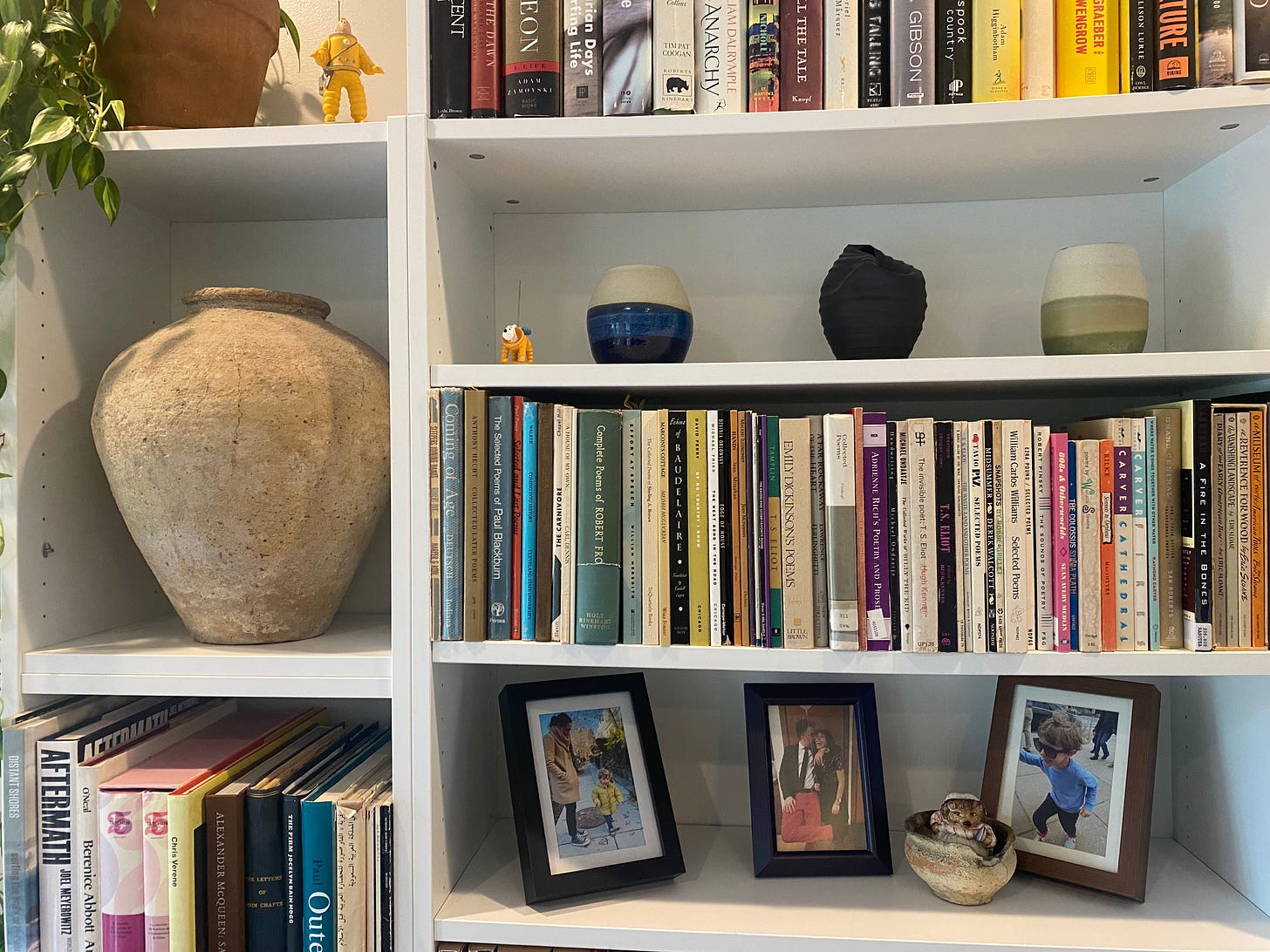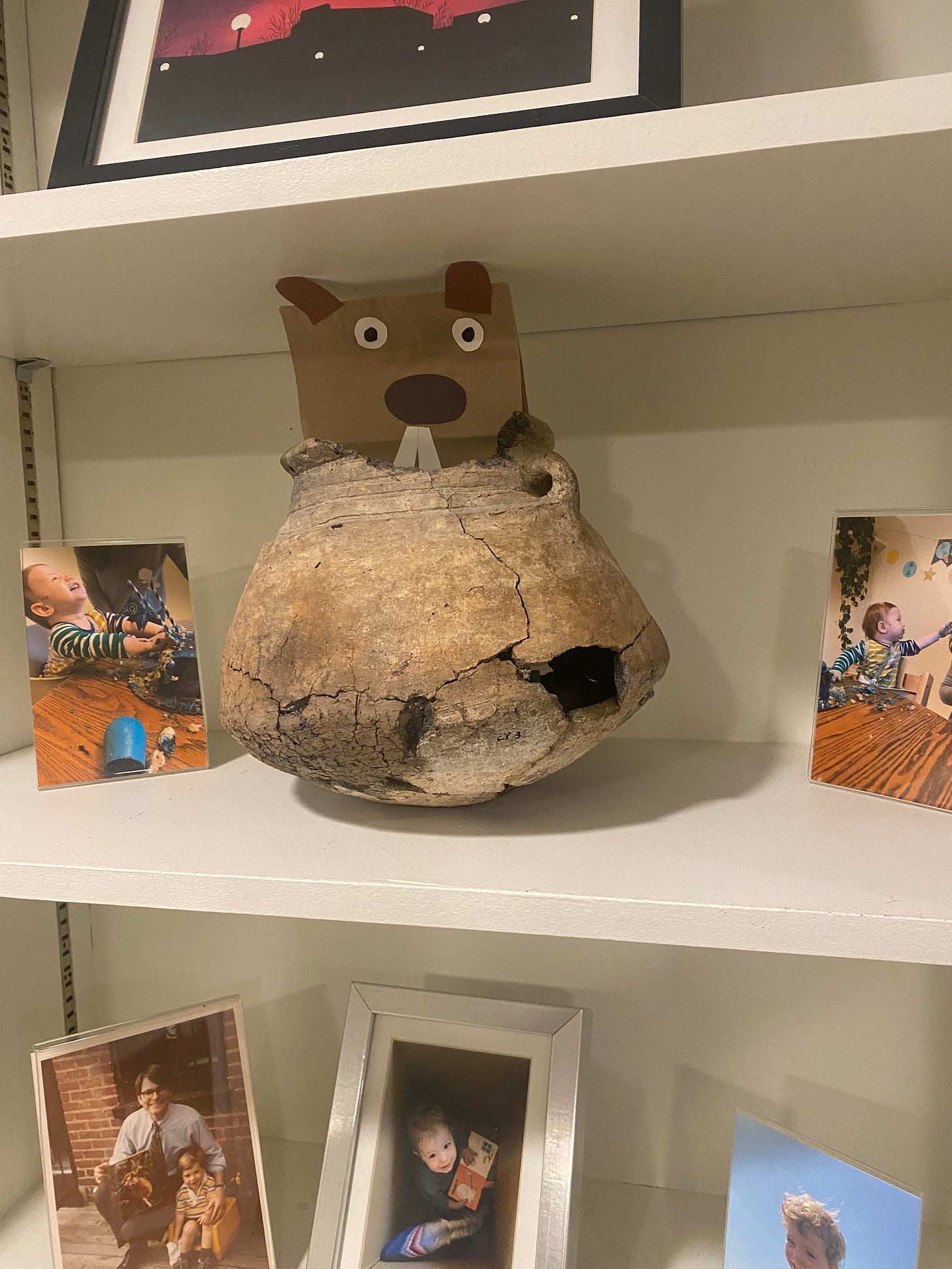Michael Hastings-Black | May 29, 2025
The Inherited Ceramics Edition
On Saudi Arabia, informal heirlooms, and treasure becoming trash (then treasure again).
Michael Hastings-Black is a brand & business strategist. He runs the consulting shop AskMHB, and hosts Breakfast Club DC.
Michael here. Colin’s recent WITI piece about ARAMCOWorld magazine struck a chord, as I often flipped through it as a kid. My mom grew up in Dhahran, Saudi Arabia, where her dad worked for ARAMCO. His job was likely non-official cover in intelligence parlance, but that’s a different story. This one is about trash, ceramics & the emotion of inherited objects.
In the 1950s and 60s, life in Dhahran was quiet. For foreign families stationed in the town, there wasn’t much to do. So my mom, her siblings and parents spent many weekends exploring the desert in a Jeep, poking at the sand in search of buried treasure. Whole pots, beads, sherds (the archaeology word for a broken ceramic piece, not to be confused with more general shards), and bits of ancient detritus were often just beneath the surface. They ranged from the Hellenistic period to the early Islamic era. At the end of a day, they’d return home, spread their findings out on the living room floor, and work to reconstruct broken pots.
It’s worth noting that this wasn’t the pillaging of precious cultural history and artefacts; these were sherds and broken items, the fragmented and often overlooked remnants of the past. King Saud allowed ARAMCO staff to collect and keep surface materials, and my family became dedicated amateur archaeologists. They donated pieces to the Metropolitan Museum of Art in 1959, some of the first to enter the museum’s collection. One person’s trash is another’s treasure.
When my grandparents left Saudi Arabia in the 1960s, they took the ceramics with them. For the next forty years, whole pots, half-reconstructed pieces, and boxes of still-to-be-identified fragments traveled with them from house to house. My grandmother joined in on academic excavations across the Middle East. It became part of their story and their identity. Their house felt like a museum, most everything fragile and off-limits.
When my grandparents died, many ceramics, boxes, and memories went to my mom. She also displayed them as exciting mementos of her childhood. I appreciated them and spent ample time fretting that our toddler would crash into the bookcases where they sat. And when my mom died, it all landed at my door.
Why is this interesting?
As WITI readers have likely experienced themselves, most Millennials don’t want their parents' stuff. Items earmarked as precious keepsakes to be passed down now end up in thrift stores. Auction houses sell the ‘good’ china, flatware, and crystal in bulk lots. Treasure has become trash.
Over the years, I’ve made some passable pottery, and my wife is actually quite good. Today, some of my mom’s finds sit on a shelf between our pieces. Some sherds await shadowbox frames. But there are still more boxes. The contents don’t interest museums, archeology departments, or Saudi Arabia (I’ve asked).
My creative challenge currently is what to do with these objects. They connected my mom to the desert and her parents. They connect me to her. Can I give them a new life, one that connects them with other people, yet doesn’t force people to tiptoe around them?
Some of the half-reconstructed pots, missing large chunks, live on shelves in our son’s basement playroom. They await a flying action figure or an errant soccer ball. The tension makes them feel alive. Other sherds were just used as a base when repotting a monstera. Still more are in the backyard, waiting to be reabsorbed into the earth, and perhaps amuse and confuse future archaeologists. And if you’ve read this far, and would like one, just ask and I’ll send you some treasure. (MHB)

